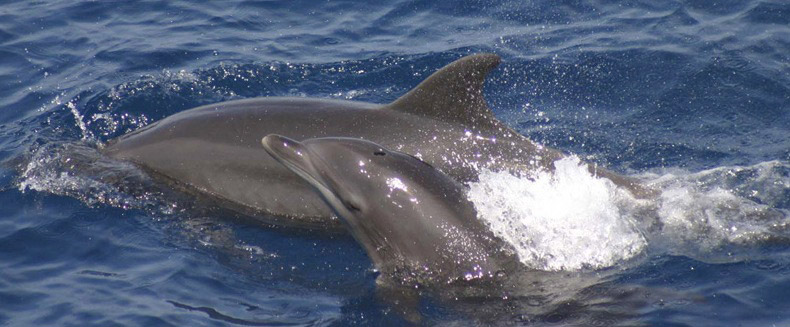No more bubble trouble
Dolphin’s clicks help scientists sort through confusing underwater noises

When human scientists can’t solve a problem, they may look to other species for help. One recent problem: bubbles. The helpful species: the Atlantic bottlenose dolphin, whose clicks helped researchers find a better way to listen underwater.
Dolphins hunt using sonar, sending clicks through the water and listening for the echoes. When its clicks bounce back, an animal knows where to find its dinner. But dolphins have also been observed blowing out streams of tiny bubbles as they hunt. That seemed odd, because bubbles reflect sound in ways that change echoes.
“Either dolphins are blinding their best sensory apparatus, or they’re doing something we can’t,” Timothy Leighton told Science News. Leighton, a physicist at the University of Southampton in England, analyzed dolphin bubbles in the new study.
Sounds bounce off of air bubbles with a lot of pep, adding extra noise. It’s a problem known by physicists who work with acoustics, the study of sound. Human-built sonar devices can’t tell the difference between the bubbles’ noise and the echo of something that might be hiding behind the bubbles.
Leighton told Science News that trying to use sonar to track something behind a stream of bubbles is like driving at night in heavy fog. Headlights in those conditions don’t help illuminate the road because the water droplets in the air spread out the light.
But bubbles don’t stop dolphins from getting their dinner. To figure out why, Leighton and his colleagues placed a steel ball in a water-filled tank and blew lots of bubbles around the ball. Then the researchers sent out dolphin-like clicks and recorded the echoes.
The team analyzed the sounds by treating them like what scientists and mathematicians refer to as a “nonlinear” system. In such a system, a small change in one part can lead to a larger change in another. (Weather forecasters often use nonlinear systems to help make predictions.) The math used in nonlinear systems can be complicated; students usually learn it in college.
Nonlinear math showed the scientists how to separate the noisy echoes from the echo of the steel ball. The findings by Leighton’s group, reported in a science journal in mid-July, are exciting to other scientists too.
“It’s really ingenious, actually,” oceanographer Grant Deane of the Scripps Institution of Oceanography in La Jolla, Calif., told Science News. “I think it’s very clever work, and there are a number of significant applications for it.”
Leighton is quick to point out, however, that he and his colleagues aren’t saying that dolphins could solve any nonlinear equation you happened to drop into the water. “I don’t think dolphins are sitting there playing with numbers in their heads.”
Power Words
sonar A system for the detection of objects and for measuring the depth of water. It works by emitting sound pulses and measuring how long it takes the echoes to return.
acoustics Relating to sound or the sense of hearing.
nonlinear A system where a little change in one quality can cause a big change in another.
physics The science concerned with the properties of energy and matter.







